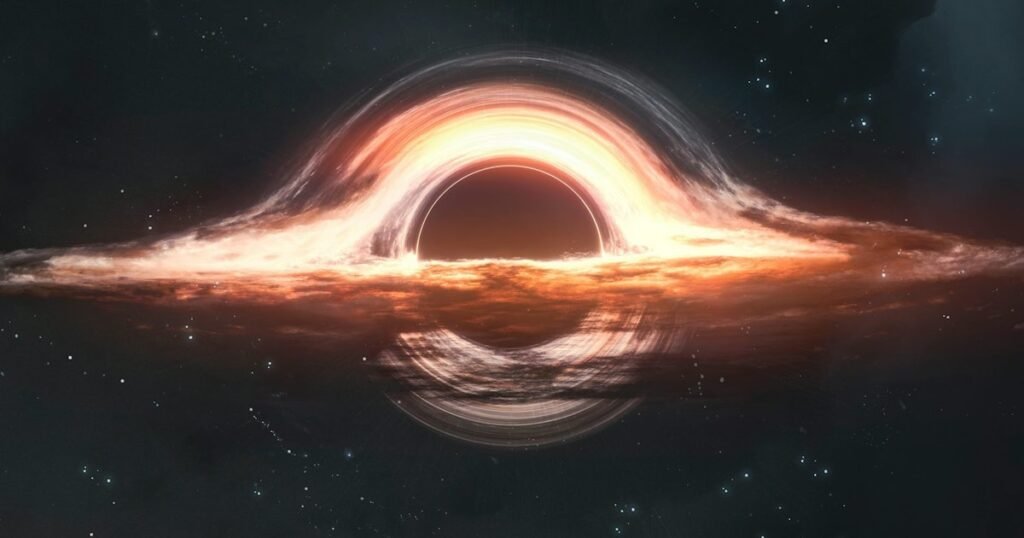Supermassive black holes are some of the most impressive (and frightening) objects in the universe, with a mass about a billion times that of the sun. And we know they’ve been around for a long time.
In fact, when the universe was less than a billion years old, astronomers discovered extremely bright, compact sources of light located at the centers of galaxies known as quasars (rapidly growing supermassive black holes). Detected.
Our new research, now published in Astrophysical Journal Letters, uses observations from the Hubble Space Telescope to show that there were far more (much less luminous) black holes in the early Universe than previously estimated. showed that it existed. Interestingly, this helps us understand how they formed and why many of them appear to be larger than expected.
Black holes grow by swallowing matter around them in a process known as accretion. This produces a huge amount of radiation. This radiation pressure imposes a fundamental limit on how quickly a black hole can grow.
Scientists therefore faced the challenge of explaining these early giant quasars. They must have grown faster than physically possible, or been born surprisingly large, because they didn’t have much cosmic time to nourish them.
light and heavy seeds
But how do black holes form in the first place? Several possibilities exist. The first is that so-called primordial black holes have existed since just after the Big Bang. Although low-mass black holes are plausible, the standard model of cosmology says that it is impossible for massive black holes to form in large numbers.
Black holes can definitely form during the final stages of the short lifetimes of some ordinary massive stars (currently verified by gravitational wave astronomy). Such black holes could in principle grow rapidly if formed in very dense star clusters where stars and black holes could merge. It is the “stellar mass seed” of the black hole that needs to grow rapidly.
Westerlund 1 is the largest and closest.
NASA
Another possibility is that it could form from a “heavy seed” with a mass about 1,000 times that of any known massive star. One such mechanism is “direct collapse.” This is because the initial structure of an unknown, invisible substance known as dark matter traps the gas cloud, while background radiation prevents star formation. Instead, they collapsed into black holes.
The problem is that only a small number of dark matter halos grow large enough to form such seeds. So this only works as an explanation if the initial black hole is rare enough.
too many black holes
Over the years, we’ve developed a pretty good idea of how many galaxies existed during the first billion years of cosmic time. However, finding black holes in these environments was extremely difficult (only bright quasars could be proven).
Black holes grow by swallowing material around them, but this does not occur at a constant rate, and their brightness changes over time as they divide their feeding into “meals”. We monitored changes in the brightness of some of the earliest galaxies over a period of 15 years and used this to conduct new research into the number of black holes they contained.
It turns out that normal early galaxies contain several times more black holes than we originally thought.
Other recent pioneering research from the James Webb Space Telescope (JSTW) has begun to reach similar conclusions. In total, there are more black holes than can be formed by direct collapse.
There is another, more exotic way to form a black hole, which could produce huge and abundant seeds. Stars are formed by the gravitational contraction of gas clouds. If a large number of dark matter particles could be captured during the contraction phase, the internal structure could be completely altered and the nucleus could be prevented from igniting.
Therefore, growth can last many times longer than the typical lifetime of a normal star, allowing the star to become even more massive. However, unlike ordinary stars and directly collapsing celestial bodies, nothing can ultimately withstand overwhelming gravity. This means that these “dark stars” will also eventually collapse to form massive black holes.
We now believe that a similar process must have occurred in the formation of many of the black holes observed in the newborn Universe.
Future plans
The study of early black hole formation has changed over the past two years, but in some ways the field is still in its infancy.
New observatories in space, such as the Euclid Project and the Nancy Grace Roman Space Telescope, will fill the search for fainter quasars early on. The NewAthena mission and Square Kilometer Array in Australia and South Africa will unlock early understanding of the many processes surrounding black holes.
But for now, it’s really JWST that you should be focusing on. With the sensitivity of our imaging and monitoring, and our spectroscopic capabilities to observe even the faintest black hole activity, we expect to be able to pinpoint the number of black holes forming the first galaxies within the next five years.
By witnessing the explosion accompanying the collapse of the first protostar, we may be able to capture the moment of black hole formation. Models say this is possible, but it will require a coordinated and dedicated effort by astronomers.
This article was originally published on The Conversation by Matthew J. Hayes from Stockholm University. Read the original article here.
learn something new every day
Source link

